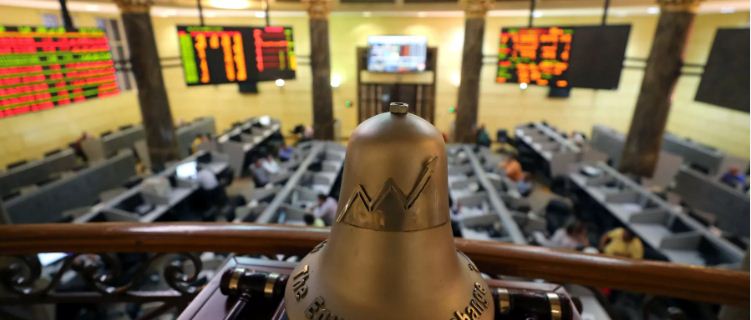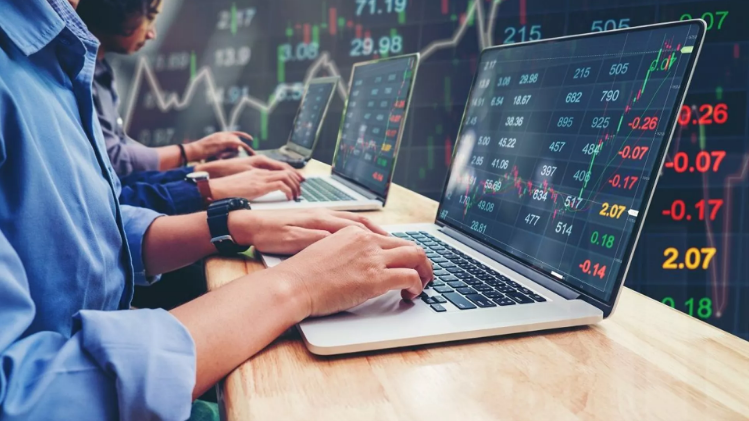- juin 18, 2023
- zidox
- (0)
- International Economy
The economy refers to the system of production, distribution, and consumption of goods and services within a society. It encompasses various factors such as businesses, industries, markets, financial institutions, and individuals who participate in economic activities.
The primary goal of an economy is to promote the welfare of its people. While there are different economic systems and theories, most modern economies strive to achieve the welfare of people through several key mechanisms:
Production and Efficiency: The economy aims to produce goods and services efficiently, utilizing available resources to their fullest potential. This involves optimizing production processes, improving technology, and allocating resources effectively to maximize output.
Employment and Income: A well-functioning economy aims to provide employment opportunities for its population. When people are employed and earn income, they have the means to support themselves, meet their basic needs, and improve their standard of living.
Distribution of Resources: The economy plays a role in the distribution of resources and wealth within a society. Policies and mechanisms such as taxation, welfare programs, and social safety nets are often implemented to address income inequalities and ensure a more equitable distribution of resources.
Price Determination: Through the interaction of supply and demand, the economy determines prices for goods and services. This price mechanism influences consumption patterns, production decisions, and resource allocation. Ideally, prices reflect the relative scarcity and value of goods, enabling efficient allocation of resources.
Competition and Innovation: A healthy economy encourages competition among businesses, which can lead to innovation, better products, and lower prices. Competition incentivizes companies to improve efficiency, invest in research and development, and meet consumer demands effectively.
Financial Systems: The economy relies on financial institutions, such as banks and stock markets, to facilitate the flow of capital. These institutions support investment, savings, borrowing, and lending, enabling businesses and individuals to fund projects, make purchases, and manage their finances.
Government Intervention: Governments play a crucial role in economic management. They enact policies, regulations, and laws to promote stability, protect consumers, ensure fair competition, address market failures, and provide public goods and services. Effective governance is essential for creating an environment conducive to economic growth and welfare.
It’s important to note that different economic systems, such as capitalism, socialism, and mixed economies, have distinct approaches to achieving welfare and address these mechanisms differently. Additionally, economic policies and priorities may vary across countries and over time based on socio-political factors and specific challenges faced by each society.
What is the economic crisis? Did it happen on purpose?

An economic crisis refers to a period of severe disruption in the economy, often characterized by a significant decline in economic activity, high unemployment rates, financial instability, and negative impacts on businesses and individuals. It can manifest as a recession, depression, or financial crisis, and its causes can vary widely.
Economic crises can arise from a combination of factors, including:
Financial Instability: Excessive speculation, asset price bubbles, and unsustainable debt levels in financial markets can lead to a financial crisis. For example, the global financial crisis of 2008 was triggered by the collapse of the subprime mortgage market in the United States and the subsequent ripple effects throughout the global financial system.
Macroeconomic Imbalances: Imbalances in key economic indicators, such as inflation, interest rates, exchange rates, fiscal deficits, or trade imbalances, can contribute to an economic crisis. For instance, a sudden surge in inflation or a large current account deficit can destabilize an economy and lead to a crisis.
External Shocks: Crises can also be triggered by external events, such as natural disasters, geopolitical conflicts, or sudden shifts in global commodity prices. These shocks can disrupt economic activity and put significant strain on an economy.
It is important to note that economic crises are generally not deliberately caused or planned by any specific entity or group. They typically emerge as a result of complex interactions within the economy and can be difficult to predict accurately. While some individuals or institutions may contribute to risky behaviors or policy decisions that exacerbate vulnerabilities, it is rare for a crisis to be intentionally engineered with the purpose of causing harm to an economy or its people.
However, it is worth acknowledging that economic policies, regulations, and governance practices can have an impact on the vulnerability of an economy to crises. Prudent economic management, effective regulatory frameworks, and proactive measures to address risks can help mitigate the likelihood and severity of economic crises.
What is meant by economic development? What is the difference between it and economic growth?

Economic development refers to a broader and multidimensional concept that encompasses not only economic growth but also social progress, improved living standards, and enhanced well-being of the population. It focuses on sustained and inclusive growth that benefits all members of society.
While economic growth and economic development are related, they have distinct meanings:
Economic Growth: Economic growth refers to an increase in the total value of goods and services produced by an economy over a specific period. It is often measured by changes in Gross Domestic Product (GDP) or Gross National Product (GNP). Economic growth indicates the expansion of an economy’s productive capacity and is typically expressed as a percentage.
Economic Development: Economic development, on the other hand, encompasses a broader set of factors beyond just the expansion of the economy. It includes improvements in the quality of life, reduction of poverty and inequality, advancements in education and healthcare, infrastructure development, environmental sustainability, and social well-being.
Key differences between economic growth and economic development include:
a. Scope: Economic growth primarily focuses on the quantitative increase in the output of goods and services, while economic development encompasses social, political, and environmental dimensions in addition to economic factors.
b. Inclusivity: Economic growth can occur without necessarily benefiting all segments of society equally. In contrast, economic development emphasizes inclusivity and aims to ensure that the benefits of growth are distributed more equitably, reducing poverty and improving living standards for all.
c. Sustainability: Economic development considers the long-term sustainability of growth, taking into account environmental impacts and resource management. It aims for sustainable development that meets the needs of the present without compromising the ability of future generations to meet their own needs.
d. Indicators: Economic growth is typically measured using indicators such as GDP or GNP, while economic development is assessed through a broader range of indicators, including Human Development Index (HDI), poverty rates, access to education and healthcare, environmental sustainability metrics, and measures of social progress.
In summary, economic growth is a fundamental component of economic development, but economic development encompasses a broader perspective, focusing on achieving sustainable, inclusive, and balanced progress across economic, social, and environmental dimensions.
What is the stock exchange? How to invest in the stock market

A stock exchange, also known as a stock market, is a regulated marketplace where buyers and sellers trade various financial instruments, primarily stocks (also called shares or equities) and other securities. It provides a platform for companies to raise capital by issuing stocks and for investors to buy and sell those stocks.
Here are the basic steps to invest in the stock market:
Educate Yourself: Start by learning about the stock market, investment strategies, and the companies you’re interested in. Understand concepts such as risk, diversification, and different investment vehicles.
Set Investment Goals: Determine your investment objectives, such as capital appreciation, income generation, or a combination of both. Assess your risk tolerance, time horizon, and available capital. These factors will guide your investment decisions.
Choose a Brokerage Account: Open a brokerage account with a reputable brokerage firm. Consider factors such as fees, available investment options, research tools, customer support, and ease of use.
Research and Select Stocks: Conduct thorough research on the stocks you are considering investing in. Analyze the company’s financial health, performance, competitive position, industry trends, and any other relevant factors. This can involve fundamental analysis, technical analysis, or a combination of both.
Develop an Investment Strategy: Determine your investment strategy based on your research and goals. Decide whether you want to invest in individual stocks or opt for other investment vehicles like index funds, exchange-traded funds (ETFs), or mutual funds.
Place Trades: Once you have chosen your investments, place buy orders through your brokerage account. Specify the quantity, price, and other relevant details. Be aware of trading fees, commissions, and any other costs associated with buying and selling stocks.
Monitor and Manage Your Investments: Regularly review your portfolio and stay informed about market trends, company news, and economic developments that may impact your investments. Consider rebalancing your portfolio periodically to align with your investment strategy and goals.
Practice Risk Management: Investing in stocks involves risks, including the potential for loss of capital. Diversify your investments across different sectors and asset classes to reduce risk. Consider setting stop-loss orders to limit potential losses.
Stay Informed and Seek Professional Advice if Needed: Stay updated on financial news, market trends, and changes in regulations that may affect your investments. If you are unsure about certain investment decisions or need personalized advice, consider consulting a financial advisor or investment professional.
Remember, investing in the stock market carries risks, and it’s important to make informed decisions based on your own financial situation and risk tolerance. It’s recommended to start with a small portion of your savings and gradually increase your investments as you gain experience and confidence in the market.

2025 Seauto Crab Pro Pool Cleaning Robot – Smart, Efficient, and Wall-Climbing!

2024’s Best Cooling Maternity Pillow – Full Body Support for Pregnancy Comfort

Premium Pregnancy Body Pillow – Optimal Support for Better Sleep

🔥 MXQ-Pro Smart TV BOX – Turn Your TV into a 4K Media Hub for Under €14!

Elegant 10K White Gold Diamond Ring Set – Perfect for Weddings or Gifts

👉 🕒 Elegance and Reliability: Gold-Plated Luxury Women’s Watch
To receive the new
Access exclusive and enriching content: Subscribe to our blog site now!

2025 Seauto Crab Pro Pool Cleaning Robot – Smart, Efficient, and Wall-Climbing!

2024’s Best Cooling Maternity Pillow – Full Body Support for Pregnancy Comfort

Premium Pregnancy Body Pillow – Optimal Support for Better Sleep

🔥 MXQ-Pro Smart TV BOX – Turn Your TV into a 4K Media Hub for Under €14!




Leave a Reply